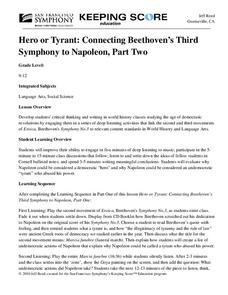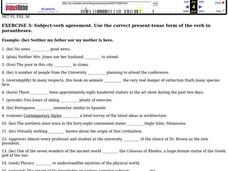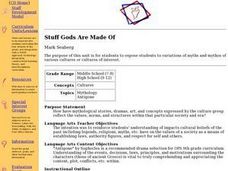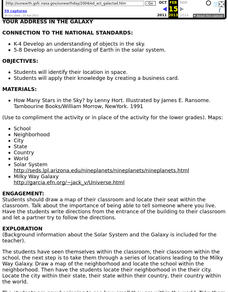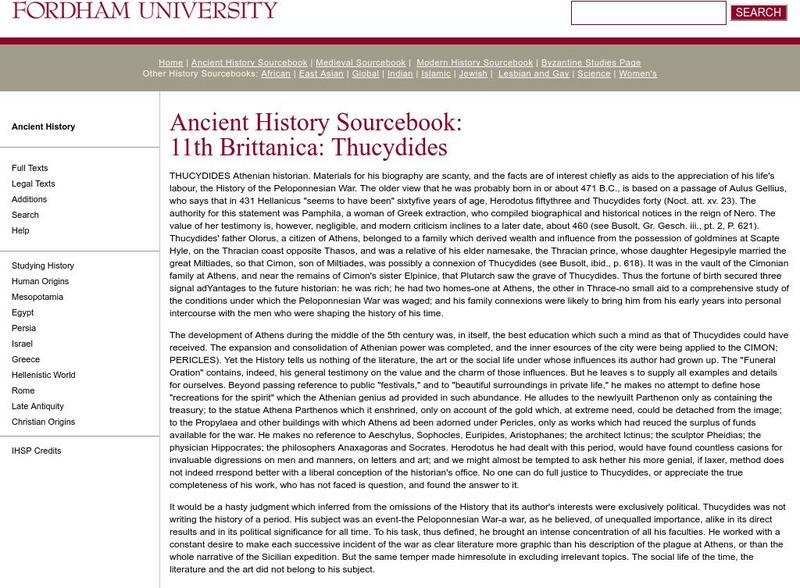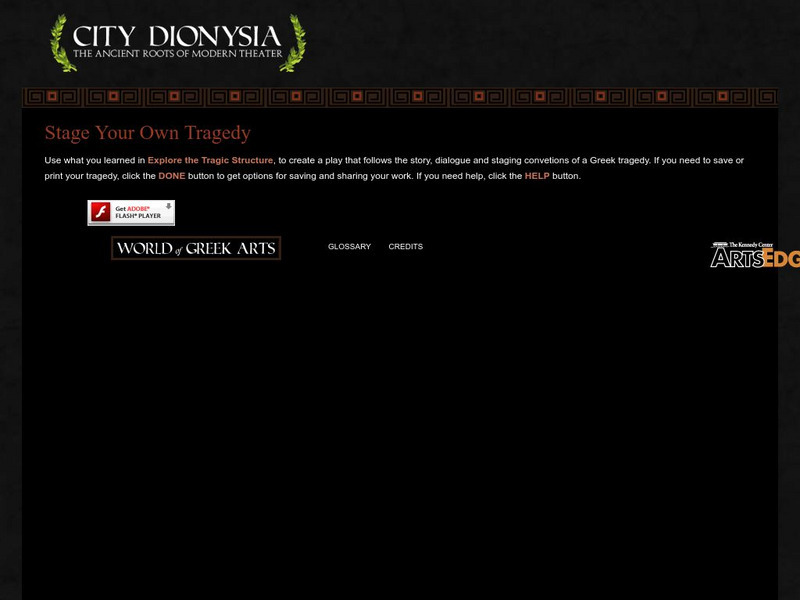Curated OER
Form, Story, and Function: Then and Now
Students compare the function and decoration of everyday objects from ancient Greece and today's world. They complete a chart imbedded in this lesson that enables them to compare today's objects to objects of the past.
Curated OER
Meteorologist for a Day
Middle schoolers research weather patterns, predict the weather for a US city and write a weather forecast that be presented to the class. The forecast should explain their weather prediction and the weather patterns and conditions it is...
Curated OER
Political Traditions
Students compare and contrast the political institutions in Greece, Rome, and the United States. In groups, they take this information to determine the influences on James Madison when organizing the republic. They develop a chart and...
Desert Discoveries
Invent - A - Saurus
Fourth graders get to invent their own dinosaur! This is done by using a very clever worksheet embedded in the plan. The worksheet leads them through naming their dinosaur by having explanations of the Latin terminology that is used with...
Curated OER
Rome Comes to Third Grade
Students explore the world of Ancient Rome in this thirteen lessons unit. the rise and fall of the Roman Empire is probed. The ideals that inspired the people's sense of purpose are developed in these lessons.
San Francisco Symphony
Hero or Tyrant: Connecting Beethoven’s Third Symphony to Napoleon, Part Two
Was Napoleon a tyrant or a hero? Answers could vary depending on the political point of view. Learners listen to Beethoven's Symphony #3 while considering Napoleon's undemocratic tyranny. They listen to the piece in five parts, each time...
Curated OER
Subject-Verb Agreement
In this grammar worksheet, students choose and underline the appropriate present-tense form of the verb in parentheses in twenty sentences that makes each one grammatically correct.
Pearson
Lesson Plan: Introduction to Plato’s Cave
Can we perceive reality or are we chained by preconceptions that limit our vision? Plato’s allegory “The Cave” serves to introduce nascent philosophers to Plato’s dialogues and hopefully to engender a love of ideas and discourse. A...
Curated OER
Pilgrims and Puritans
With graphic organizers galore, learners will follow the changes of church and state in early colonial America. They look at the differences between the pilgrims and the puritans in terms of beliefs and life ways. Myths and...
Curated OER
Illustrate the Constellations
Students explore space science by participating in a star identification activity. In this astronomy lesson, students identify different star patterns and discuss the movement of stars across the sky as the seasons change. Students...
Curated OER
The Life and Lines of Robinson Jeffers
Robinson Jeffers had various twists and turns in his life that make for a great quiz! Fairly long questions are complex and detailed. Contains a lot of biographical information and a little bit of information about his poems.
Curated OER
Someone Like Me
Students investigate what sort of person the author is. They listen as the teacher use her notes to introduce Tom Holt briefly. Students are asked if anyone has read any of his books. They work in pairs to find more about Tom Holt as a...
Curated OER
Stuff Gods Are Made Of
Students examine different myths of various cultures around the world. Using artwork, they discuss the artistic designs and develop hypothesize about their importance. They use the internet to research myths they are aware of and share...
Curated OER
The Rosetta Stone: Where Does It Belong?
In this Rosetta Stone worksheet, students read a 6-paragraph article on the Rosetta Stone. Students respond to 4 short answer questions regarding the article. Vocabulary words from the article and their definitions are also...
Curated OER
Indiana Jones: Quiz 93
For this Indiana Jones worksheet, students answer multiple choice questions about details of the movie Indiana Jones. Students complete 12 questions total.
Curated OER
Your Address in the Galaxy
Learners create a business card after researching their location in space and determining their Galactic Address.
Curated OER
Babylonian Square Roots
Students are introduced to a method for finding square roots used by the Babylonian people of Mesopotamia. The method involves dividing and averaging, over and over, to find a more accurate solution with each repeat of the process.
Curated OER
Goddesses Are Personifications Too!
Students explore the use of personification as a way of expressing ideals. They transfer this understanding to the present by creating an allegorical depiction of a contemporary ideal or value inspired by precedents in the...
Curated OER
My 2011 Resolution: Investigate Mathematics of Calendars and Fitness
Ring in the new year with interdisciplinary units related to the development of calendars and getting fit.
Curated OER
The Great Debate
Students research and debate the British Museum's ownership of the friezes from the Parthenon and Acropolis. Art controversy is discussed in this one-day lesson involving three groups of students within the class.
Curated OER
American Contemporary
Young scholars are introduced to the American Contemporary period in design. As a class, they examine the various types of design techniques used in this period by watching a PowerPoint presentation. To end the lesson, they sketch...
Internet History Sourcebooks Project
Fordham University: Ancient History Sourcebook: Thucydides
This site from the Fordham University provides an extensive biography of Thucydides and his writing of history. It details his life as a statesman, traveller and writer. He was schooled in rhetoric and philosophy. His intention in...
John F. Kennedy Center
The Kennedy Center: Arts Edge: City Dionysia: The Ancient Roots of Modern Theater
Media-rich site explains the development of theater practice in ancient Greece and compares Greek dramatic forms and purposes with contemporary theater practices. Learners can then write and stage their own original plays to demonstrate...
Other
The History of Writing
This explanation of the history of writing traces writing from the use of "Counting tokens," to the development of the Roman alphabet. The pictures of how writing has progressed over time is very interesting and helpful.





